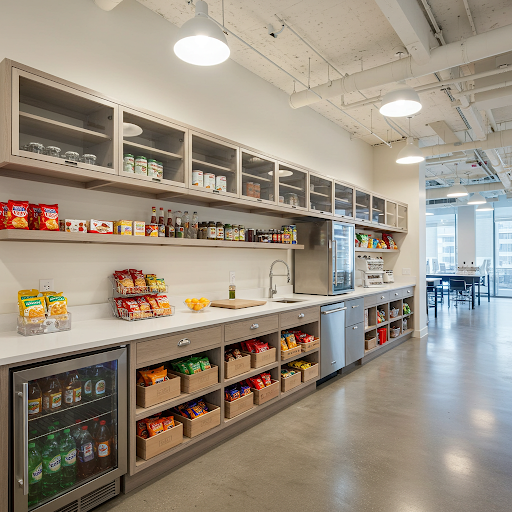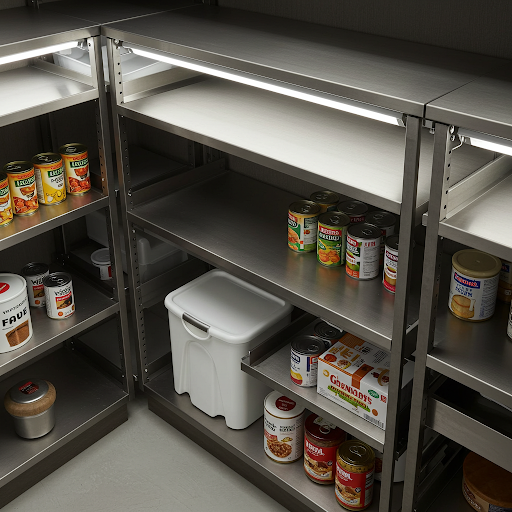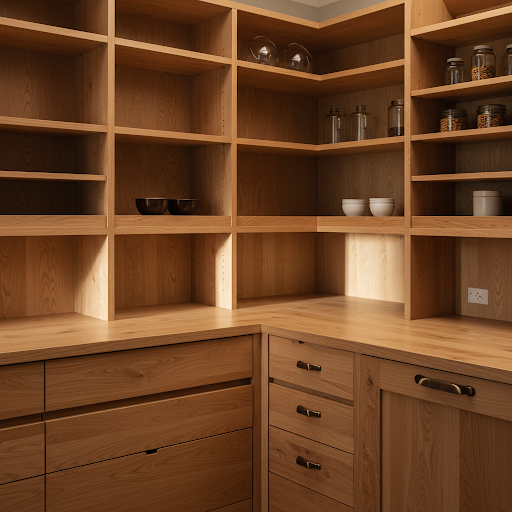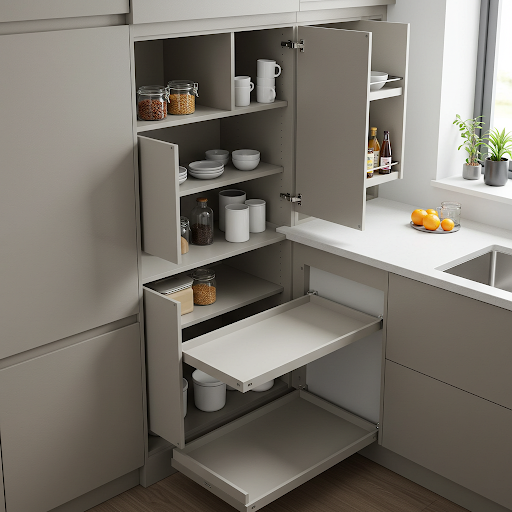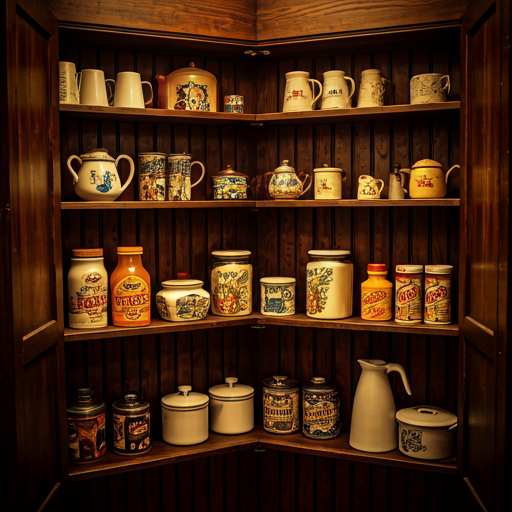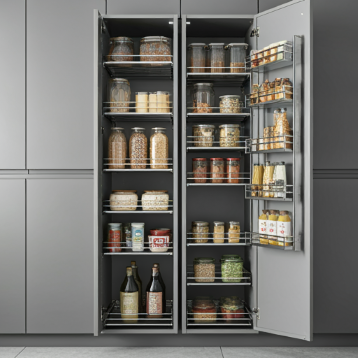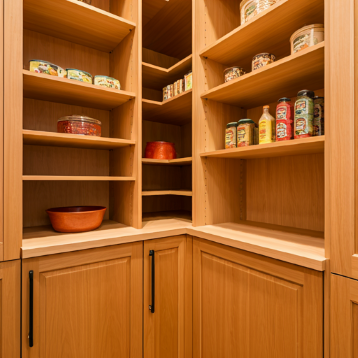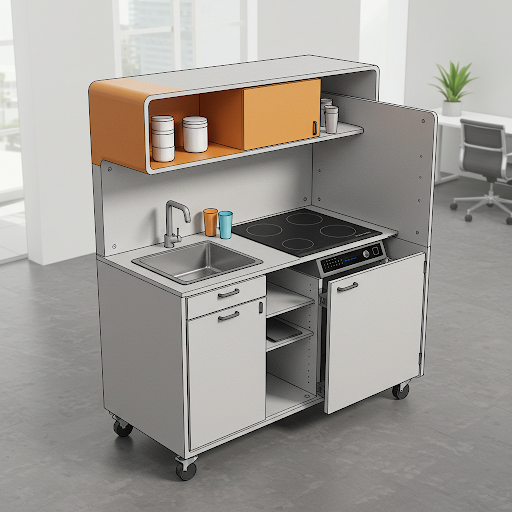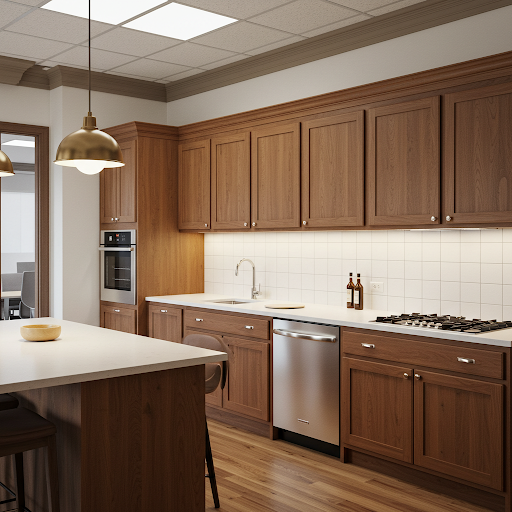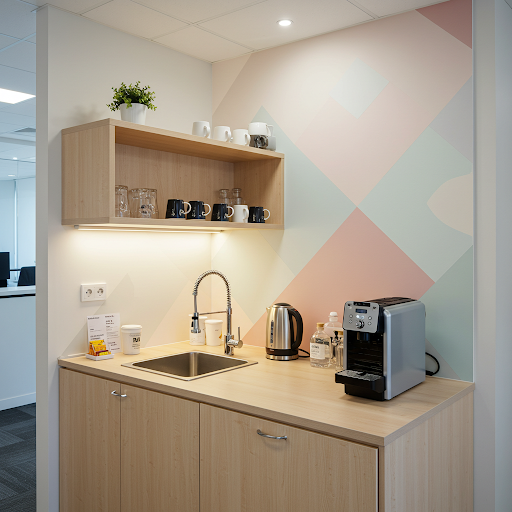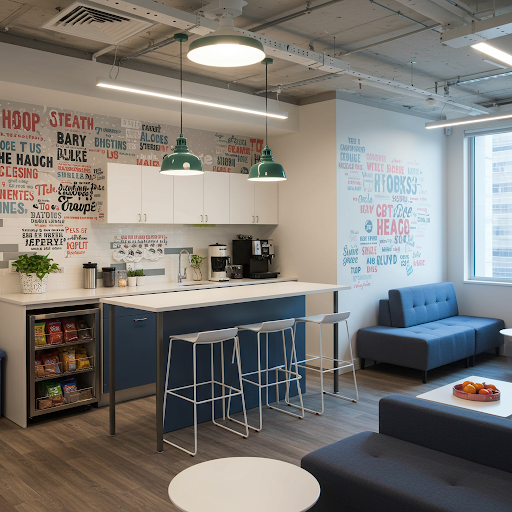Description
When designing a small office kitchen pantry, maximizing space and functionality is key. Traditionally, a place for cooking implies the creation of some stock of products or canned goods. And not all of them are convenient (and necessary) to store in the refrigerator. The solution suggests itself: a kitchen with a pantry. It is sometimes problematic to allocate a separate room for storing things, especially if the office is not very large.
In confined areas, inefficient layouts lead to clutter and frustration, hindering productivity. Strategic design transforms a cramped space into a highly functional hub.
Vertical storage, using tall cabinets and shelves, exploits unused wall space. Pull-out drawers and organizers make items easily accessible, preventing deep, cluttered shelves. Compact appliances, like small refrigerators and microwaves, save precious countertop space. Multifunctional furniture, such as a foldable table, provides flexibility.
Functionality dictates layout; frequently used items should be within easy reach. Clear, labeled containers optimize organization, preventing wasted time searching.
Good lighting brightens the space, making it appear larger and more inviting. Ultimately, a well-designed small pantry improves workflow, boosts morale, and ensures efficient use of limited resources.
Office kitchen pantry cabinets
Office kitchen pantry cabinets are crucial for efficient space use. Vertical cabinets maximize wall space, offering ample storage without consuming floor area. Adjustable shelving adapts to varying item heights, preventing wasted space and ensuring organized storage. Pull-out drawers and organizers bring items to the forefront, eliminating the need to rummage through deep shelves. This combination enhances accessibility, makes finding supplies effortless, and promotes a tidy, functional pantry. These features are essential for optimizing limited space and maintaining a well-organized office kitchen, boosting productivity and convenience.
Shelving
Open kitchen shelving in a small office fosters a sense of spaciousness by visually expanding the room, unlike bulky cabinets. Wall-mounted shelves capitalize on vertical space, keeping counters clear and items accessible. This arrangement prevents clutter, a key factor in cramped feelings. Wire baskets further enhance this effect by offering breathable storage, preventing food spoilage, and adding a light, airy aesthetic. The transparency of wire baskets allows for easy visibility of contents, minimizing visual weight and contributing to an organized, less confined environment.
Office kitchen pantry organization
Effective pantry organization transforms a chaotic space into a functional and efficient area. Utilizing clear, uniform containers is paramount. These containers create visual harmony and maximize space by eliminating the irregular shapes and sizes of original packaging. The transparency of these containers allows for quick identification of contents, reducing the need to rummage and minimizing food waste.
Labeling these containers is the next crucial step. Clear, concise labels ensure that everyone in the office can easily locate desired items, promoting shared responsibility and preventing disorganization. This simple practice saves time and reduces frustration.
Categorizing items streamlines the pantry further. Grouping snacks, beverages, and dry goods into distinct sections creates a logical flow and prevents items from getting lost. This systematic approach allows for easy restocking and inventory management, ensuring that the pantry remains organized and efficient. By implementing these strategies, an office pantry can become a well-organized hub, fostering a more pleasant and productive work environment.
Functionality
Functionality in a small office pantry hinges on prioritizing essentials. Cluttering with non-essentials wastes valuable space. Storage solutions should cater to frequently used items, ensuring easy access to coffee, snacks, or utensils. An organized space minimizes wasted time searching. Clear containers and labels contribute to this. Regular cleaning is vital for hygiene and a pleasant environment, preventing spills and build-up. A functional pantry boosts efficiency; employees can quickly grab what they need and return to work, fostering a productive and tidy workspace.
Aesthetics
A light color palette, such as whites, creams, or pastels, reflects light, visually expanding a small kitchen. Ample lighting, both natural and artificial, eliminates shadows, making the space feel brighter and more open. Decorative touches, like plants, artwork, or colorful accents, add personality and warmth. These elements create a welcoming atmosphere, transforming a potentially cramped area into an inviting space. The combination of light colors, good lighting, and thoughtful decor contributes to a sense of spaciousness and comfort, enhancing the overall office environment.
Hyegine
Hygiene is paramount in a shared office kitchen. Easy-to-clean surfaces, like stainless steel or sealed countertops, prevent bacterial buildup and simplify cleanup. Proper waste disposal, with designated bins for recycling and compost, minimizes odors and maintains cleanliness. Regular cleaning schedules ensure consistent sanitation. This includes wiping down counters, sweeping floors, and emptying trash. A clean kitchen promotes a healthy work environment, reduces the spread of germs, and fosters a positive atmosphere. By prioritizing hygiene, the office kitchen becomes a safe and pleasant space for everyone.

